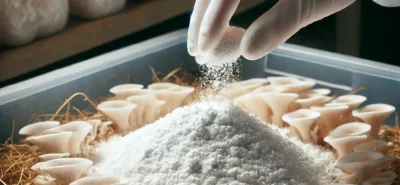How to Improve Mushroom Genetics Through Cloning and Isolation
Are you looking to grow bigger mushrooms, increase your yields, or achieve more consistent flushes? If so, you’re not alone. For both hobbyists and commercial cultivators, the secret to long-term success lies in understanding how to intentionally improve mushroom genetics (also known as isolating mushroom genetics) through repetitive cloning and selective culturing.
By carefully selecting and cloning your top-performing mushrooms — and occasionally expanding them into liquid culture — you can gradually develop strains that are highly adapted to your growing environment. Whether you’re working with oyster, lion’s mane, reishi, or any gourmet or medicinal species, this method is both effective and accessible.
1. Why Improve Mushroom Genetics?
To begin with, not all mushrooms are created equal. Some fruiting bodies grow larger, colonize faster, or resist contamination better than others. However, these desirable characteristics won’t stick around by chance. Instead, they need to be intentionally selected and preserved.
By applying repetitive cloning and selection techniques, you can isolate mushroom genetics in a more reliable direction. As a result, you may notice improvements such as:
-
Larger and more uniform fruiting bodies
-
Quicker colonization times
-
Better resistance to contamination
-
Enhanced flavor, texture, or medicinal value
-
Increased resilience to your specific environmental conditions
🧠 Keep in mind: This is not genetic engineering. Rather, it’s natural selection guided by your observations and decisions.
Why Clone Mushrooms?
Put simply, mushroom cloning involves taking a tissue sample — typically from inside the stem of a mature mushroom — and placing it onto an agar plate or into liquid culture. Over time, this tissue develops into a colony of mycelium that is genetically identical to the original mushroom.
This process gives you the opportunity to preserve successful genetics from your best-performing mushrooms — which means you can grow more of what works and less of what doesn’t.
Typically, cultivators clone using:
-
Agar plates: Ideal for identifying, isolating, and refining genetic characteristics in a controlled way
-
Liquid culture (LC): Perfect for rapidly expanding a clean clone for multiple future grows
While both methods are valuable, agar is best for precision and observation, whereas liquid culture excels when you’re ready to scale production.
Monoculture vs. Multiculture: Why This Distinction Is Crucial
Before moving forward, it’s important to clarify a foundational concept: the difference between monoculture and multiculture. Understanding this distinction helps you make better decisions when refining mushroom genetics.
🌱 Multiculture (From Spores)
-
Grows from spores, which are genetically diverse
-
Mycelium contains multiple competing strains
-
Common outcomes:
-
Irregular fruit sizes
-
Inconsistent yields
-
Unpredictable colonization
-
🍄 Monoculture (From Clones)
-
Grows from a clone, which is genetically isolated and more uniform
-
Entire mycelial network shares more of the same genetic blueprint
-
Expected outcomes:
-
Even flushes
-
Predictable growth cycles
-
More consistent results across batches
-
✅ Pro tip: You can still start with spores, then clone the most promising mushroom. This lets you shift from a genetically diverse base into a reliable monoculture over time.
How to clone Mushrooms and Improve Mushroom Genetics
While cloning once is a great start, repetitive cloning and isolation takes things further. Over successive generations, it allows you to fine-tune your genetics for maximum performance under your specific conditions.
Here’s how the process typically works:
-
Begin with variety — Start from spores, wild clones, or hybrid cultures
-
Fruiting phase — Observe how the mushrooms grow and perform
-
Select the best — Identify the largest, fastest-growing, or most resilient fruiting body
-
Clone it — Transfer tissue to agar or liquid culture
-
Repeat — Continue observing, selecting, and cloning across multiple generations
As a result, each cycle brings you closer to a high-performing strain that’s perfectly suited to your goals — whether that’s speed, yield, or resilience.
The Power of Liquid Culture in Scaling
Although agar is excellent for isolation and observation, liquid culture becomes especially important when you’re ready to scale your operation efficiently.
Once you’ve identified a mushroom with traits you love — and validated it through consistent performance — you can expand it through liquid culture to:
-
Quickly produce large volumes of inoculant
-
Inoculate grain jars or bags directly
-
Preserve sterility while maintaining the genetic integrity
Furthermore, you can clone directly into liquid culture from tissue (with proper technique), or first isolate the genetics on agar and then transfer them into LC. Either way, the outcome is the same: you’re expanding clean, consistent genetics.
Improve Mushroom Genetics For Bigger and Uniform Flushes
One of the most noticeable benefits of working with clones is flush uniformity. In practice, this means:
-
Mushrooms grow at the same pace
-
They’re similar in size, shape, and density
-
Harvesting becomes easier, faster, and more predictable
-
Less substrate is wasted on underperforming fruit
This kind of consistency is crucial for commercial growers. However, it’s also deeply satisfying for hobbyists who value clean, impressive results.
📸 If you’ve ever seen a grow where every mushroom looks identical, it was almost certainly the result of well-maintained monoculture genetics.
Pro Tips for Long-Term Success
To keep your genetics strong and avoid common pitfalls, keep the following tips in mind:
-
Don’t over-clone: Over many generations, clones may experience senescence (genetic fatigue). Therefore, keep backups from earlier generations.
-
Label everything: Always track your generations (e.g., A1, A2, A3). This makes it easier to trace success or failure.
-
Isolate strong sectors: If a mycelial plate looks uneven, cut and transfer only the healthiest-looking sector to fresh media.
-
Use cold storage: Preserve elite clones using slants or refrigerated agar plates. This provides long-term access to your best genetics.
-
Document everything: Consistently take photos, weigh flushes, and keep records. In the long run, this helps reveal patterns and allows data-driven decisions.
Final Thoughts: Let Nature Work With You
In summary, whether you’re cultivating mushrooms for personal use, culinary delight, or commercial gain, repetitive cloning and selective culturing are powerful, natural tools for improving your mushroom genetics.
By learning to differentiate unique conditions.
Over time, you’ll see:
-
Consistent yields
-
Vigorous, resilient mycelium
-
Predictable, uniform flushes
Best of all, you’re not modifying DNA or working against nature — you’re simply observing, selecting, and letting the strongest genetics thrive.





